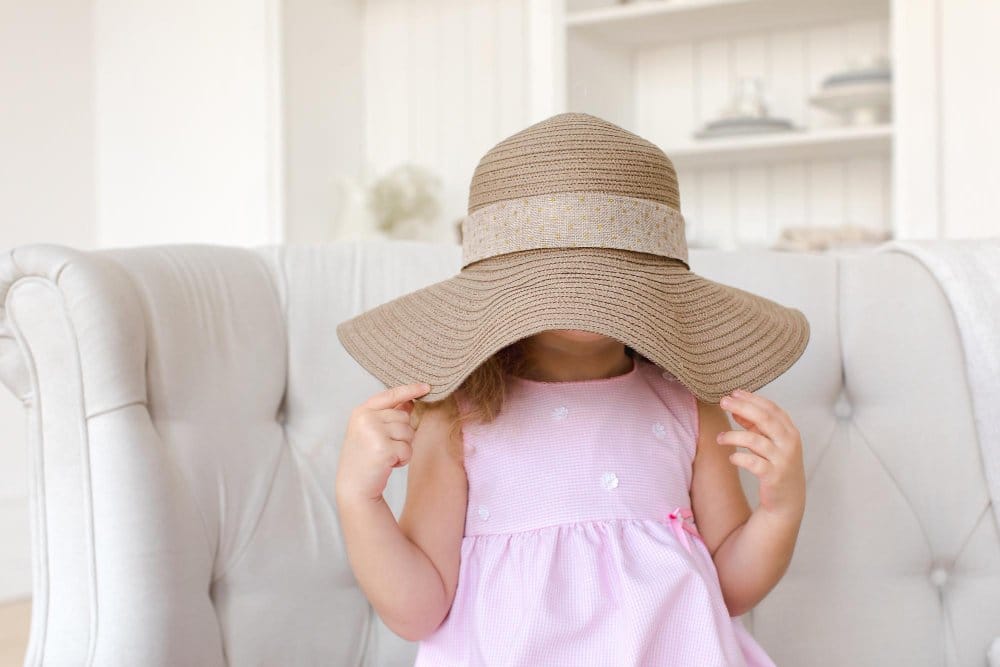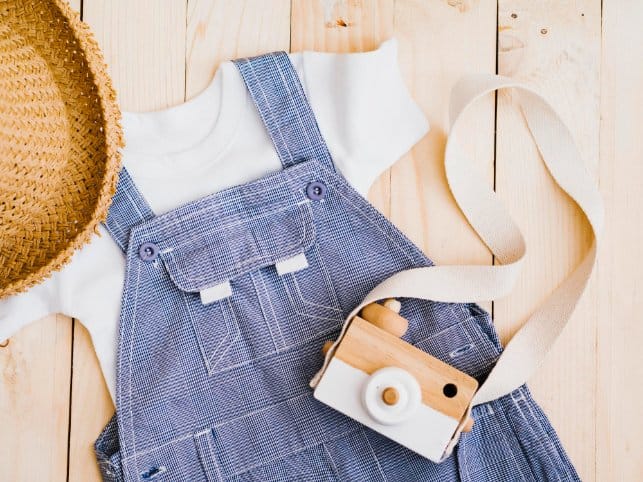Expert advice on keeping your little one cool, protected, and comfortable during hot weather with the right clothing choices and safety practices.
Table of Contents
- Understanding Your Toddler’s Temperature Needs
- The Science Behind Heat-Safe Fabrics
- Sustainable and Non-Toxic Clothing Options
- Temperature-Based Dressing Guidelines
- Essential Clothing Layers for Different Weather
- Sizing and Fit Considerations for Hot Weather
- Daytime Outfits for Active Toddlers
- Sleep and Nap Wear in Warm Weather
- Heat Safety and Emergency Prevention
- Regional Climate Considerations
- Practical Tips for Parents
- Frequently Asked Questions
Understanding Your Toddler’s Temperature Needs
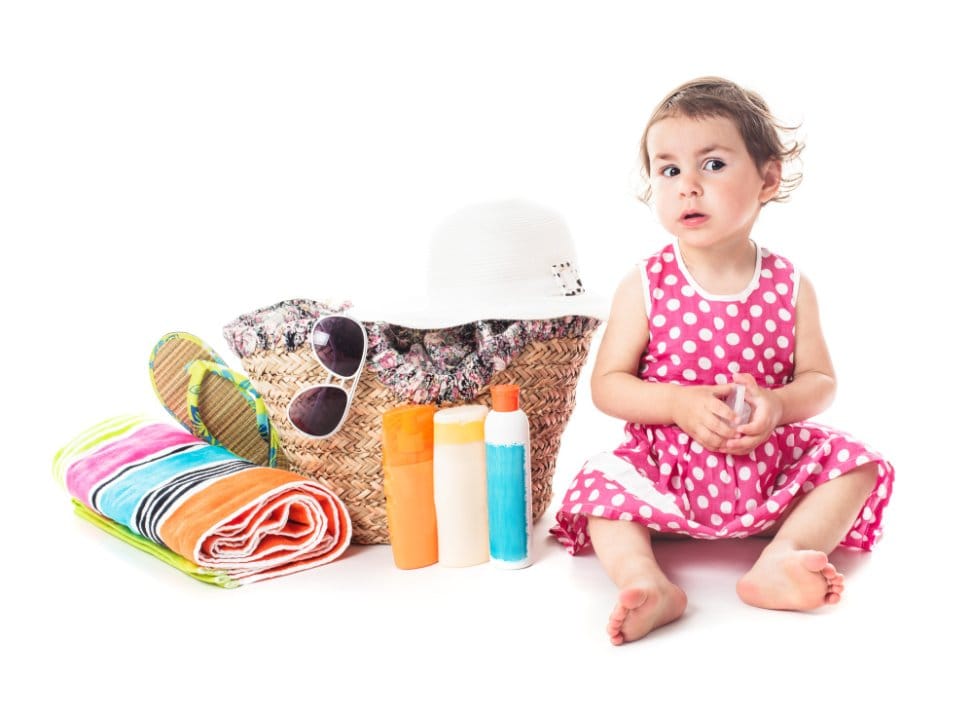
Toddlers have unique physiological characteristics that make them more vulnerable to heat-related illness than older children and adults. Their smaller body size means they have a higher surface area to body weight ratio, causing them to heat up and cool down more quickly than adults.
Why Toddlers Overheat Easily
Several factors contribute to toddlers being more susceptible to overheating:
- Immature thermoregulatory system: Their bodies are still developing the ability to regulate temperature efficiently
- Lower sweat rate: Toddlers produce less sweat per pound of body weight compared to adults
- Higher metabolic rate: They generate more heat per pound of body weight during activity
- Limited communication: They may not effectively communicate when they feel too hot
Recognizing Signs of Overheating
Watch for these warning signs that your toddler may be getting too hot:
Immediate Warning Signs:
- Red, flushed cheeks or face
- Rapid or shallow breathing
- Excessive sweating or hot, dry skin
- Unusual fussiness or irritability
- Lethargy or unusual sleepiness
- Thirst or signs of dehydration
- Damp hair or clothing from sweating
Emergency Cooling Steps
If you notice signs of overheating, take immediate action:
- Move your child to a cool, shaded area immediately
- Remove excess clothing layers
- Apply cool (not cold) water to wrists, neck, and temples
- Offer small sips of cool water if your child is conscious and alert
- Fan your child or use air conditioning if available
- Seek medical attention if symptoms don’t improve quickly
The Science Behind Heat-Safe Fabrics
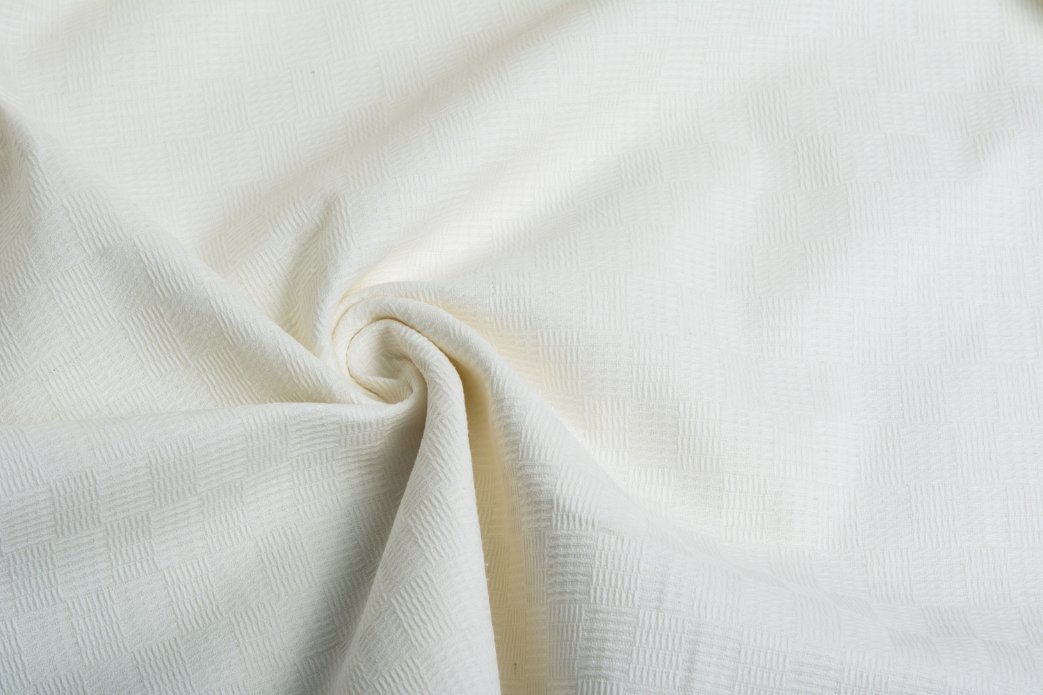
Understanding fabric properties helps you make informed choices about what will keep your toddler most comfortable in warm weather. Different materials interact with heat, moisture, and air circulation in unique ways.
Breathability and Moisture Management
The most important factors for warm weather clothing are breathability (measured in CFM – Cubic Feet per Minute of airflow) and moisture-wicking capabilities. Here’s how different fabrics perform:
100% Organic Cotton
Breathability: High
Moisture-wicking: Moderate
Best for: Everyday wear, sensitive skin
Natural fiber that allows excellent airflow. Choose GOTS-certified organic cotton to avoid chemical treatments that can irritate skin.
Bamboo Fiber
Breathability: Very High
Moisture-wicking: Excellent
Best for: Active play, humid climates
Naturally antimicrobial and incredibly soft. Bamboo fibers have micro-gaps that enhance ventilation.
Linen
Breathability: Exceptional
Moisture-wicking: Good
Best for: Very hot, dry climates
The most breathable natural fiber, though it wrinkles easily. Perfect for beach days and outdoor activities.
Merino Wool
Breathability: High
Moisture-wicking: Excellent
Best for: Temperature regulation
Naturally regulates temperature in both warm and cool conditions. Odor-resistant and ultra-soft.
UPF Ratings for Sun Protection
When choosing fabrics for sun protection, look for UPF (Ultraviolet Protection Factor) ratings:
| UPF Rating | Protection Level | UV Transmission | Recommended Use |
|---|---|---|---|
| UPF 15-20 | Good | 6.7-5.0% | Light outdoor activities |
| UPF 25-35 | Very Good | 4.0-2.9% | Extended outdoor play |
| UPF 40-50+ | Excellent | 2.5% or less | All-day sun exposure |
Fabrics to Avoid in Hot Weather
Some materials can trap heat and increase the risk of overheating:
- Synthetic blends without moisture-wicking: Regular polyester and nylon can trap heat
- Heavy cotton denim: Too thick and doesn’t breathe well
- Wool (except merino): Traditional wool is too insulating for hot weather
- Vinyl or plastic materials: Don’t allow any airflow
- Dark colors: Absorb more heat from sunlight
Sustainable and Non-Toxic Clothing Options
Why Choose Organic and Sustainable Fabrics?
Sustainable clothing choices benefit both your child’s health and the environment. Traditional textile production often involves chemicals like formaldehyde, PFAS (forever chemicals), and heavy metals that can irritate sensitive skin.
Certifications to Look For
When shopping for toddler clothes, look for these important certifications:
| Certification | What It Means | Benefits |
|---|---|---|
| GOTS (Global Organic Textile Standard) | Organic fibers, environmental criteria, social standards | No harmful chemicals, fair labor practices |
| OEKO-TEX Standard 100 | Tested for harmful substances | Safe for baby skin, no toxic chemicals |
| Fair Trade Certified | Fair wages and working conditions | Ethical production, quality materials |
| Cradle to Cradle | Circular design principles | Renewable materials, safe chemistry |
Budget-Friendly Sustainable Options
Sustainable doesn’t have to mean expensive. Here are ways to choose eco-friendly options on a budget:
- Quality over quantity: Buy fewer, higher-quality pieces that last longer
- Second-hand shopping: Quality pre-loved baby clothes reduce waste and save money
- Hand-me-downs: Check our hand-me-down safety checklist to ensure passed-down clothes meet current safety standards
- Clothing swaps: Exchange outgrown items with other parents
- Seasonal sales: Buy organic and sustainable brands during end-of-season sales
- Multipurpose pieces: Choose items that work for multiple occasions
Temperature-Based Dressing Guidelines
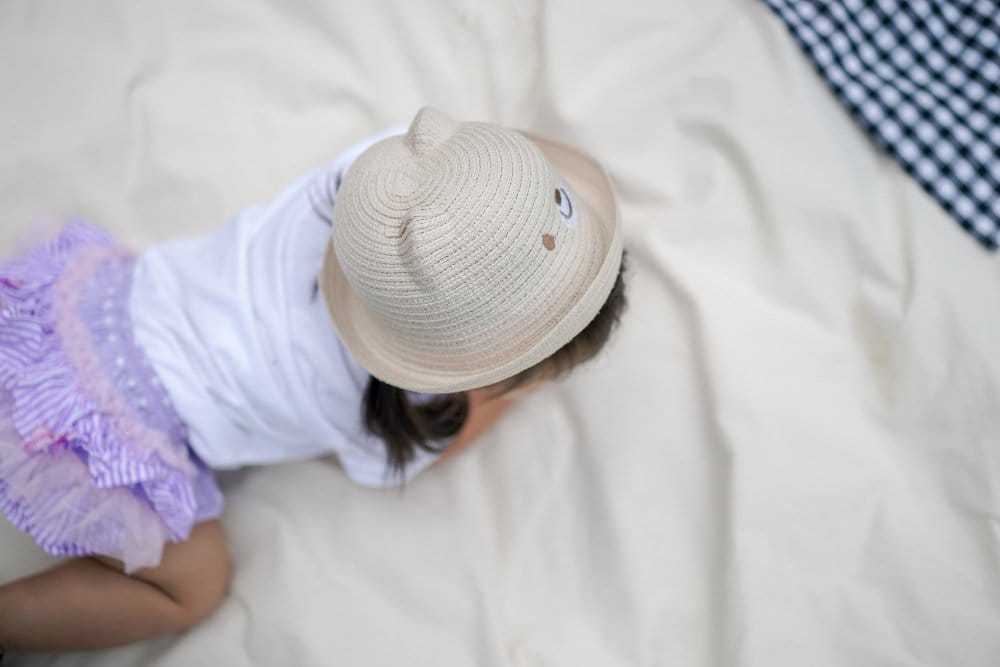
How to Dress Your Toddler by Temperature
Use this comprehensive guide to choose appropriate clothing based on both temperature and humidity levels:
US Temperature Guidelines
| Temperature (°F) | Clothing Recommendation | Additional Notes |
|---|---|---|
| 90°F and above | Lightweight shorts, tank top, sun hat | Limit outdoor time, seek shade frequently |
| 80-89°F | Light cotton t-shirt, shorts, sandals | Perfect for outdoor play with shade breaks |
| 70-79°F | Cotton t-shirt, light pants or shorts | Comfortable for most activities |
| 60-69°F | Long sleeves, light pants, light jacket | Layer for temperature changes |
UK Temperature Guidelines (Celsius)
| Temperature (°C) | Clothing Recommendation | Weather Considerations |
|---|---|---|
| 30°C and above | Minimal clothing, sun protection essential | Rare in UK, take extra precautions |
| 25-29°C | Light cotton clothes, breathable fabrics | Typical hot summer day |
| 20-24°C | T-shirt, light trousers or shorts | Pleasant warm weather |
| 15-19°C | Light jumper, long trousers | Mild weather, perfect for layers |
Humidity Considerations
High humidity makes temperatures feel hotter and affects clothing choices:
- High humidity (70%+): Choose moisture-wicking fabrics, avoid cotton in very humid conditions
- Moderate humidity (40-70%): Cotton and cotton blends work well
- Low humidity (below 40%): Any breathable fabric is suitable, but increase hydration
Essential Clothing Layers for Different Weather
Layering allows you to adjust your toddler’s clothing as temperatures change throughout the day. The key is choosing the right base layers and outer layers that work together.
Base Layer Essentials
The base layer sits directly against your toddler’s skin and should prioritize comfort and moisture management:
Best Base Layer Features:
- Soft, tagless construction to prevent irritation
- Moisture-wicking properties to keep skin dry
- Flat seams to reduce chafing during active play
- Easy-care fabrics that withstand frequent washing
- Appropriate fit – not too tight or loose
Outer Layer Options
Outer layers provide sun protection and can be easily added or removed:
- Lightweight long-sleeve shirts: UPF protection for arms
- Breathable hoodies: Easy to remove when it gets warmer
- Sun-protective clothing: Special fabrics designed for UV protection
- Light cardigans: Perfect for air-conditioned spaces
Adapting to Changing Conditions
Weather can change quickly, especially during transitional seasons. Here’s how to prepare:
| Time of Day | Typical Temperature Change | Recommended Strategy |
|---|---|---|
| Early Morning | Cooler, may be 10-15°F lower | Start with light layer, easy to remove |
| Midday | Warmest part of day | Minimal clothing, maximum sun protection |
| Evening | Cooling down, especially outdoors | Have light jacket or sweater ready |
Sizing and Fit Considerations for Hot Weather
Proper fit becomes even more important in warm weather. Clothes that are too tight can restrict airflow and trap heat, while clothes that are too loose may not provide adequate sun protection.
Toddler Size Chart by Age and Measurements
| Size | Age Range | Height (inches) | Chest (inches) | Waist (inches) | Weight (lbs) |
|---|---|---|---|---|---|
| 12M | 9-12 months | 28-30 | 19 | 19 | 18-22 |
| 18M | 12-18 months | 30-32 | 20 | 19.5 | 22-26 |
| 2T | 18-24 months | 32-34 | 21 | 20 | 26-30 |
| 3T | 2-3 years | 34-37 | 22 | 20.5 | 30-33 |
| 4T | 3-4 years | 37-40 | 23 | 21 | 33-36 |
| 5T | 4-5 years | 40-43 | 24 | 21.5 | 36-42 |
Hot Weather Fit Guidelines
For warm weather clothing, follow these fit principles:
- Loose but not baggy: Allow air circulation without excess fabric
- Room for movement: Toddlers are active and need freedom to play
- Consider shrinkage: Natural fibers may shrink slightly after washing
- Growth allowance: Buy with 3-6 months of growth in mind
Brand Variations
Different brands may have slightly different sizing standards. Always check the specific brand’s size chart before purchasing, especially when buying online.
Daytime Outfits for Active Toddlers
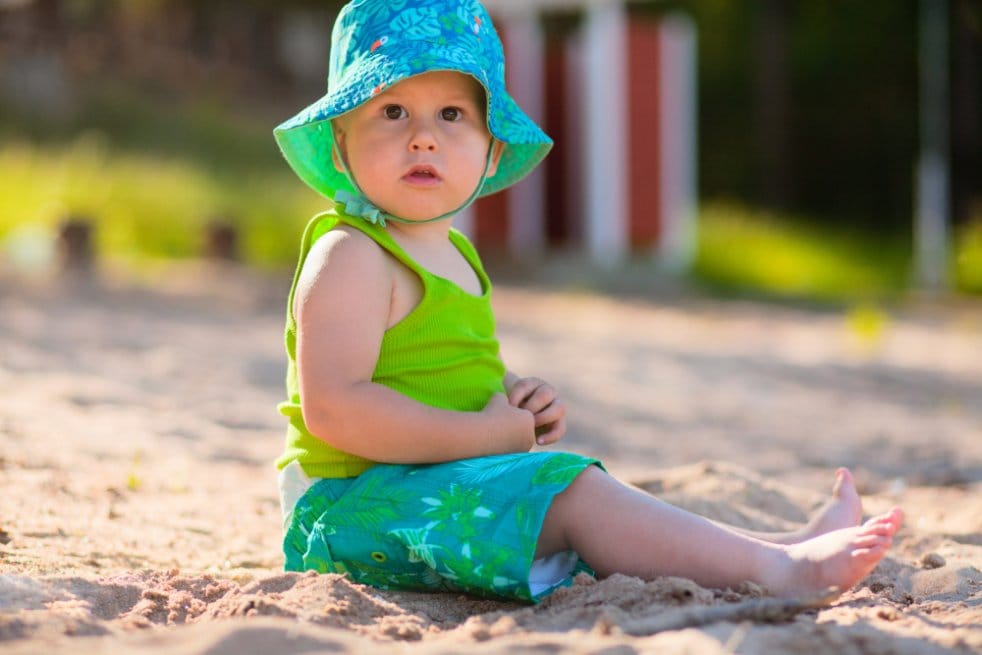
Active toddlers need clothing that keeps up with their energy while providing protection from heat and sun. The key is choosing pieces that allow for unrestricted movement while maintaining proper temperature regulation.
Essential Daytime Pieces
Lightweight Shorts
Choose cotton or cotton-blend shorts with a comfortable waistband. Avoid restrictive belts or tight elastic that can dig in during play.
Best features: Elastic waistband, minimal seams, quick-dry materials
Breathable T-Shirts
Opt for soft, breathable fabrics in light colors. Tank tops work well for very hot days.
Best features: Tagless, moisture-wicking, UPF protection
Rompers and Playsuits
One-piece outfits are convenient and prevent the shirt from riding up during active play.
Best features: Easy diaper access, snap closures, stretchy materials
Sun-Protective Accessories
Wide-brimmed hats, UV-protective sunglasses, and lightweight cover-ups for extended sun exposure.
Best features: Adjustable straps, washable materials, UPF 50+ rating
2025 Fashion Trends for Toddlers
This year’s trends focus on comfort, sustainability, and vibrant self-expression:
- Bold, bright colors: Vibrant yellows, turquoise, and coral dominate summer collections
- Gender-neutral designs: Earth tones and unisex cuts in sustainable materials
- Maximalist prints: Fun animal prints, fruit themes, and abstract designs
- Sustainable athleisure: Comfortable, sporty pieces made from eco-friendly materials
- Nautical influences: Stripes, sailor-inspired details, and coastal themes
Outfit Ideas by Activity
| Activity | Recommended Outfit | Special Considerations |
|---|---|---|
| Playground Play | Cotton shorts, moisture-wicking tee, sneakers | Choose clothes that can get dirty |
| Beach/Pool | Swimsuit, rash guard, sun hat, water shoes | UPF 50+ protection essential |
| Park Picnic | Light dress or romper, sandals, sun hat | Easy diaper access if needed |
| Shopping/Errands | Comfortable shorts set, light cardigan | Layer for air conditioning |
Sleep and Nap Wear in Warm Weather
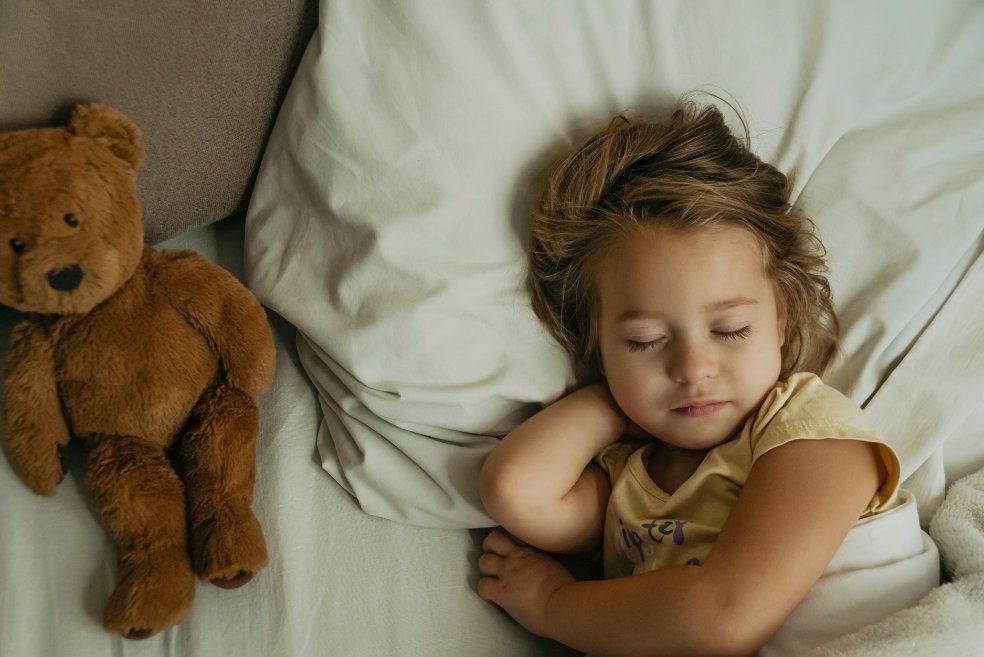
Proper sleepwear is crucial for your toddler’s safety and comfort during warm nights. Overheating during sleep can disrupt rest and pose safety risks.
How to Dress a 2-Year-Old for Bed in Summer
The ideal sleep environment should be between 68-72°F (20-22°C). Here’s how to dress your toddler based on room temperature:
| Room Temperature | Sleep Clothing | Bedding | Additional Notes |
|---|---|---|---|
| 75-80°F (24-27°C) | Lightweight onesie or just diaper | Light sheet only | Check for sweating regularly |
| 70-75°F (21-24°C) | Short-sleeve pajamas or sleep sack (0.5 tog) | Light blanket or sheet | Ideal temperature range |
| 65-70°F (18-21°C) | Long-sleeve pajamas or sleep sack (1.0 tog) | Light blanket | Perfect for most climates |
What to Dress a Toddler in 25°C at Night
At 25°C (77°F), your toddler should wear minimal clothing:
- Best option: Lightweight, short-sleeve pajamas made from breathable cotton
- Alternative: Just a diaper/underwear with a very light sleep sack (0.5 tog or less)
- Bedding: Just a light cotton sheet, no blanket needed
- Room setup: Use fan for air circulation, keep curtains closed during day
Sleep Sack Guidelines for Warm Weather
Sleep sacks are safer than loose blankets and help regulate temperature:
Choosing the Right Sleep Sack:
- 0.5 tog rating for warm nights (above 75°F)
- 1.0 tog rating for moderate temperatures (68-75°F)
- Breathable materials like organic cotton or bamboo
- Proper fit – not too loose around neck or arms
- Easy diaper access with bottom zipper
Signs Your Toddler Is Too Warm at Night
Monitor your sleeping toddler for these indicators of overheating:
- Sweating, especially on the chest or back of neck
- Damp hair or pajamas
- Flushed cheeks or red face
- Restless sleep or frequent waking
- Kicking off blankets repeatedly
- Rapid breathing during sleep
Heat Safety and Emergency Prevention
Understanding heat-related illness prevention and emergency response is crucial for every parent. Toddlers can develop heat exhaustion and heat stroke quickly, making prevention the best strategy.
Can Overdressing a Toddler Cause Fever?
Yes, overdressing can cause your toddler’s body temperature to rise artificially. This is different from a fever caused by illness, but it can be just as dangerous. Signs include:
- Elevated body temperature without illness symptoms
- Excessive sweating followed by dry skin
- Irritability and discomfort
- Temperature that drops when clothing is removed
How to Cool Down an Overheated Toddler
Immediate Cooling Protocol
- Remove from heat: Move to air-conditioned space or shade immediately
- Remove clothing: Strip down to diaper/underwear
- Cool water application: Use lukewarm (not cold) water on wrists, temples, and back of neck
- Hydration: Offer small, frequent sips of cool water
- Fan or air conditioning: Improve air circulation around your child
- Monitor closely: Watch for improvement in 10-15 minutes
- Seek help: Call pediatrician if no improvement or symptoms worsen
Heat Illness Prevention Strategies
Prevention is always better than treatment. Follow these guidelines:
Daily Prevention Checklist:
- Check weather and heat index before going outside
- Plan outdoor activities for cooler parts of the day
- Ensure adequate hydration before, during, and after outdoor time
- Choose appropriate clothing for the temperature
- Pack extra water and snacks for outings
- Know the location of shaded areas and cooling centers
- Have a plan for sudden weather changes
When to Seek Medical Attention
Call your pediatrician or seek emergency care if your toddler shows:
- High fever (over 103°F/39.4°C) with heat exposure
- Vomiting or severe nausea
- Confusion or altered mental state
- Difficulty breathing or rapid heartbeat
- Seizures
- Loss of consciousness
- No improvement after 15 minutes of cooling measures
Regional Climate Considerations
Different climates require specific approaches to dressing toddlers. Understanding your local weather patterns helps you make better clothing choices.
Humid vs. Dry Heat
The type of heat significantly affects clothing choices:
| Climate Type | Characteristics | Best Fabrics | Special Considerations |
|---|---|---|---|
| High Humidity | Feels hotter than actual temperature | Moisture-wicking synthetics, bamboo | Change clothes more frequently |
| Dry Heat | Lower humidity, intense sun | Natural fibers, cotton, linen | Extra sun protection needed |
Coastal vs. Inland Considerations
- Coastal areas: Sea breeze can create temperature swings; pack layers
- Inland areas: More extreme temperature variations; prepare for hot days and cooler nights
- High altitude: Stronger UV rays require enhanced sun protection
- Urban areas: Heat island effect makes cities hotter; plan accordingly
Air Quality Considerations
Poor air quality from pollution or wildfires affects outdoor clothing choices:
- Moderate air quality: Limit outdoor time during peak pollution hours
- Poor air quality: Stay indoors when possible, use air purifiers
- Wildfire smoke: Keep windows closed, limit outdoor activities
- High pollen days: Choose tightly woven fabrics that don’t trap allergens
Practical Tips for Parents
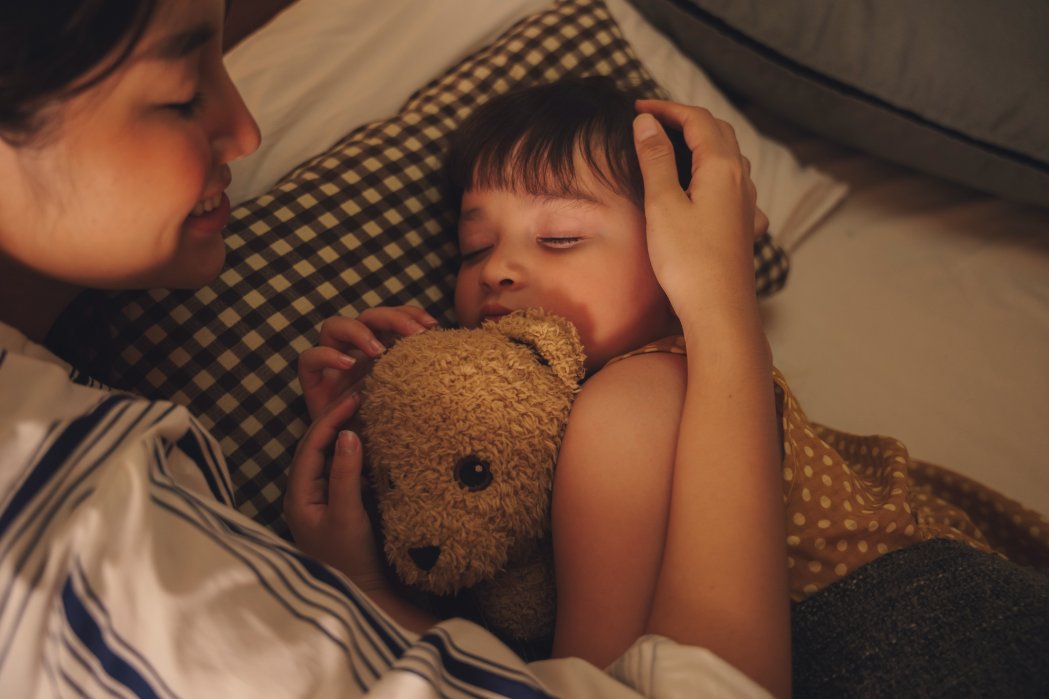
How to Keep Your Toddler Cool in a Heatwave
During extreme heat events, extra precautions are necessary:
Heatwave Survival Strategies:
- Stay indoors during peak heat hours (11 AM – 4 PM)
- Use air conditioning or visit public cooling centers
- Offer cool baths or showers multiple times per day
- Freeze washcloths for instant cooling packs
- Create DIY misting bottles for outdoor cooling
- Serve frozen fruits and ice pops for hydration
- Use cooling mats or wet towels for nap time
Packing for Warm Weather Outings
Always be prepared when leaving home with your toddler:
| Essential Items | Purpose | Quantity Needed |
|---|---|---|
| Extra clothes | Spills, accidents, temperature changes | 1-2 complete outfits |
| Water bottles | Hydration | More than you think you’ll need |
| Snacks | Energy and electrolyte replacement | High-water content fruits |
| Sun protection | UV protection | Hat, sunglasses, sunscreen |
| Cooling items | Emergency cooling | Wet wipes, small towel |
Managing Clothing Care
Warm weather means more frequent clothing changes and washing. Here are care tips for different fabrics:
- Wash in cool water: Preserves fabric and saves energy
- Line dry when possible: Heat from dryers can damage delicate fibers
- Pre-treat stains quickly: Summer activities mean more stains
- Rotate clothing: Have enough outfits to allow proper drying time
Economic Considerations
Smart shopping strategies for warm weather clothing:
- Buy at end of season: Stock up on next year’s sizes during clearance sales
- Focus on versatile pieces: Items that work for multiple occasions
- Consider clothing rental: For special occasions or rapidly growing toddlers
- Quality over quantity: Invest in well-made basics that last
- Hand-me-down networks: Use our age-appropriate hand-me-down generator to find the right sizes and items for your toddler
- Calculate savings: Our hand-me-down cost savings calculator shows how much you can save by sharing clothes with other families
Frequently Asked Questions
In extremely hot weather (above 85°F/29°C), dress your toddler in minimal, lightweight clothing. Choose breathable fabrics like cotton or bamboo, light colors, and ensure maximum skin coverage for sun protection while allowing airflow. Always prioritize staying in shaded or air-conditioned areas during peak heat hours.
Use a layering system with a lightweight base layer and easy-to-remove outer layers. Start with more layers in the cool morning, remove them as it warms up, and add them back for cooler evenings. Pack a light cardigan or long-sleeve shirt for air-conditioned spaces.
Yes, toddlers are more susceptible to overheating because they have immature thermoregulatory systems, higher surface area to body weight ratios, and lower sweat rates. They also cannot communicate discomfort as effectively as adults, making careful monitoring essential.
Toddlers typically have higher metabolic rates and generate more body heat per pound than adults. They’re also more active and have developing temperature regulation systems. If your child seems consistently overheated, check their clothing choices, room temperature, and hydration levels. Consult your pediatrician if you have concerns.
This seems unrelated to warm weather, but understanding seasonal transitions helps. Snowpants are typically needed when temperatures drop below 40°F (4°C) and there’s snow or wet conditions. The key is having a complete seasonal wardrobe ready for different weather conditions.
Check your toddler’s chest or back of neck – they should feel warm but not hot or sweaty. Look for signs of comfort like normal breathing, good mood, and appropriate activity levels. If they’re sweating, flushed, or seem uncomfortable, adjust their clothing immediately.
Dress your toddler in minimal, breathable clothing for car travel. Use sunshades on windows, never leave your child unattended in the vehicle, and ensure proper car seat ventilation. Consider cooling the car before putting your child in their car seat, and take frequent breaks for longer trips.
Conclusion: Keeping Your Toddler Safe and Comfortable
Dressing your toddler appropriately for warm weather is one of the most important ways to ensure their safety, comfort, and enjoyment during the hot months. The key principles we’ve covered throughout this guide center on understanding your child’s unique physiological needs and making informed choices about fabrics, fit, and safety practices.
Key Takeaways for Parents
Prioritize Safety Over Style: While 2025’s vibrant trends and sustainable fashion choices are wonderful, your toddler’s safety should always come first. Choose clothing that promotes proper temperature regulation and provides adequate sun protection, even if it means skipping the latest fashion trend.
Invest in Quality, Sustainable Materials: GOTS-certified organic cotton, bamboo fibers, and other sustainable materials not only protect your child’s sensitive skin from harmful chemicals but also provide superior breathability and comfort. While these options may cost more initially, they often last longer and provide better value over time.
Understand Your Climate: Whether you’re dealing with humid coastal weather or dry inland heat, understanding your local climate helps you make better clothing choices. Remember that humidity makes temperatures feel hotter, while dry heat requires extra attention to hydration and sun protection.
Master the Art of Layering: Effective layering allows you to adapt to changing temperatures throughout the day. Start with breathable base layers and have lightweight outer layers ready for air-conditioned spaces or unexpected weather changes.
Emergency Preparedness Recommendations
Always be prepared for heat-related emergencies by knowing the signs of overheating and having a cooling plan ready. Keep emergency supplies in your car and know the locations of nearby cooling centers. Remember that toddlers can develop heat illness quickly, so prevention through appropriate clothing choices is always preferable to treatment.
Long-term Benefits
The clothing choices you make now establish healthy habits for your child’s future. Teaching them about weather-appropriate dressing, sun safety, and comfort awareness helps them develop independence and self-care skills. Additionally, choosing sustainable and ethical clothing brands models environmental responsibility and supports better working conditions in the textile industry.
Final Recommendations
- Create a seasonal wardrobe plan: Organize clothes by temperature ranges to make daily decisions easier
- Invest in versatile pieces: Choose items that work for multiple occasions and activities
- Stay informed: Keep up with weather forecasts and heat advisories in your area
- Build a support network: Connect with other parents to share tips and resources
- Trust your instincts: You know your child best – if something doesn’t feel right, make adjustments
- Regular reassessment: As your toddler grows and develops, their clothing needs will change
Remember that every child is unique, and what works for one toddler may not work for another. Pay attention to your child’s individual responses to different fabrics, fits, and weather conditions. With careful observation, quality clothing choices, and proper safety practices, you can ensure your toddler stays comfortable, protected, and happy throughout the warm weather months.
By following the guidelines in this comprehensive guide, you’re well-equipped to make informed decisions about your toddler’s warm weather clothing. Your attention to these details not only keeps your child safe and comfortable but also contributes to their overall health, development, and quality of life during the active summer months.
References and Additional Resources
- American Academy of Pediatrics: Protecting Children from Extreme Heat
- Centers for Disease Control and Prevention: Infants and Children Heat Safety
- National Weather Service: Heat Safety for Kids and Teens
This article was last updated in August 2025 and reflects current safety guidelines and fashion trends. Always consult with your pediatrician for personalized advice about your child’s specific needs.

